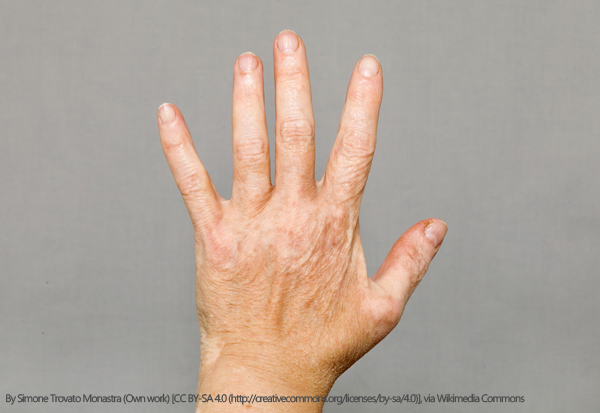According to a paper published by researchers at NYU Langone Medical Center, two molecular signaling pathways are responsible for controlling skin and hair colour in both mice and humans. The newly-identified link could provide a novel drug target for the development of therapeutics for skin pigment disorders like vitiligo.
The researchers say that identifying ways to activate these pathways could help repigment damaged skin cells in patients with vitiligo. Therapeutics targeting the pathways could also have a cosmetic application in eliminating gray hair in people who are allergic to chemical dyes.
Using mice and human cells, the researchers found that generation of melanocyte stem cells is regulated via cell-to-cell signaling. The cascade is part of a previously-identified Wnt signaling pathway, involving the endothelin receptor type B (EdnrB).
Both endothelin proteins and the EdnrB pathway have previously been linked to blood vessel formation – or angiogenesis – as well as cell growth and division. The researchers believe that this is the first time this pathway has ever been connected to the growth and development of melanocytes, which produce pigment in the skin and hair.
The researchers say their study is the first to show a link between Wnt signaling and EdnrB, suggesting that EdnrB controls cell division of melanocyte stem cells. The results of the research were published in the journal, Cell Reports.
“Our study results show that EdnrB signaling plays a critical role in growth and regeneration of certain pigmented skin and hair cells and that this pathway is dependent on a functioning Wnt pathway,” said Dr. Mayumi Ito, an associate professor in the Ronald O. Perelman Department of Dermatology at NYU Langone, and the senior investigator on the study. Ito and her team found that mice lacking the EdnrB pathway displayed a premature greying response of their fur.
Interestingly, when Ito and her colleagues stimulated the EdnrB pathway, 15 times more melanocyte stem cells were produced over a 2 month period. The researchers noted a hyperpigmentation response in the mice; white mice with patches of wounded skin became dark after healing.
Vitiligo occurs in about 1 percent of the global population, according to the National Institute of Arthritis and Musculoskeletal and Skin Diseases. The researchers plan to investigate other cell signaling pathways and their role in melanocyte stem cell production.












Join or login to leave a comment
JOIN LOGIN